
Isère. SaintMauricel’Exil Jacques Frier, des champignons en céramique plus vrais que nature
Background Plant-parasitic nematodes and herbivorous insects have a significant negative impact on global crop production. A successful approach to protect crops from these pests is the in planta expression of nematotoxic or entomotoxic proteins such as crystal proteins from Bacillus thuringiensis (Bt) or plant lectins. However, the efficacy of this approach is threatened by emergence of.
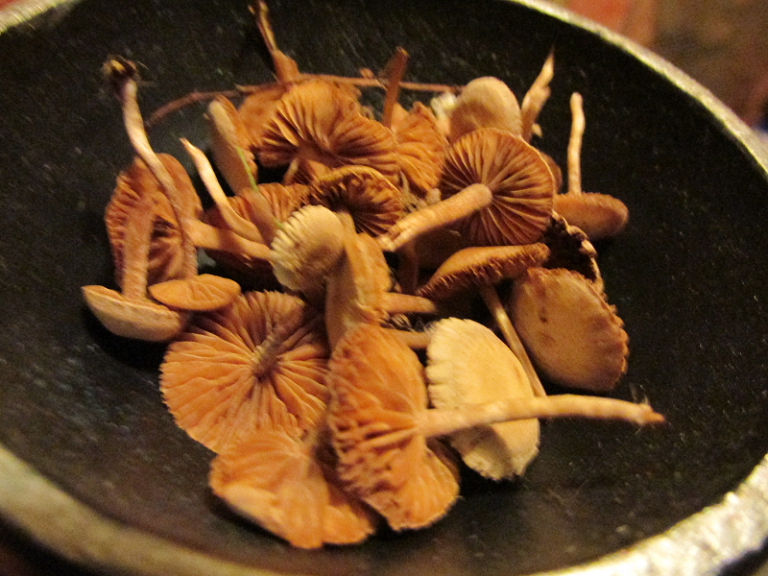
Marasme des Oréades Scáthcraft
Par Anthony de l'entreprise AMYCO. Joignez-vous à une de nos randonnées champignons, tous les samedis en saison, dans Charlevoix : http://www.amyco.ca/randon.

Marasme des Oréades Le monde en images
Marasme des Oréades : de la cueillette à l'assiette. Si, en vous baladant dans votre jardin, vous tombez sur de petits champignons orangés poussant en rond, il s'agit probablement du marasme des Oréades. Remarque importante : Pour tout doute sur l'identification d'un champignon, n'hésitez pas à faire appel à un pharmacien.
Setas Extremadura Marasmius Oreades
These fungi can cause the development of rings or arcs of deep green grass and bare dead grass areas. Type 1 is the most virulent. The disease is caused by any one of a number of soil-inhabiting fungi. The early stages of development starts when germinating spores or a strand of mycelium begins to grow in the soil.

marasme des oréades
Le marasme des oréades, également appelé faux mousseron ou mousseron d'automne, pousse dans les pelouses, souvent en rond de sorcière de mai à novembre. On reconnaît le marasme des oréades grâce aux critères d'identification suivants: Le chapeau est de couleur crème ocre ou orangé avec un mamelon souvent plus sombre.
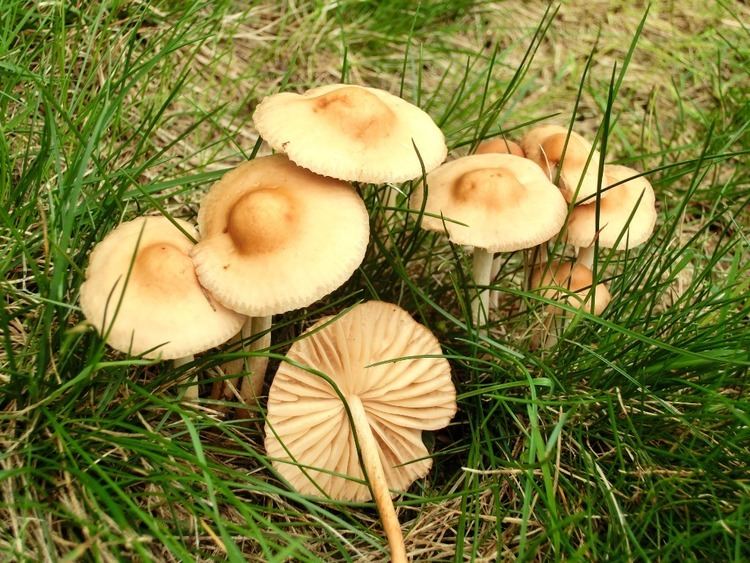
Marasmius oreades Alchetron, The Free Social Encyclopedia
Marasmius oreades are sweet-tasting because, in common with other species from the same genus, they contain trehalose, which is a kind of sugar. These mushrooms are also great as the basis of sauces for pasta dishes and are quite good in omelets too. Fairy Ring Champignons are ideal for drying for long-term storage because, as you might expect.

Marasme des Oréades (Marasmius oreades) MARASMIACEAE C. Plante
Reconnaître le faux Mousseron. Le Marasme des oréades est assez facile à reconnaître. Il suffit de bien identifier les critères suivants : Chapeau : il est assez petit et mesure entre 1 et 4 cm de diamètre. D'une couleur beige claire avec des reflets roses. Le chapeau possède un petit mamelon central.

Marasmes des oreades et girolles 02/07/22 YouTube
Family: Marasmiaceae Roze ex Kühner 1980. Genus: Marasmius E.M. Fries 1835. Marasmius oreades (Bolton) E.M. Fries (1836). The name comes from the Latin "oreades" = woods nymphs, mountain nymphs. Commonly known in Italy as "gambe secche", due to its thin, tough and coriaceous stem.
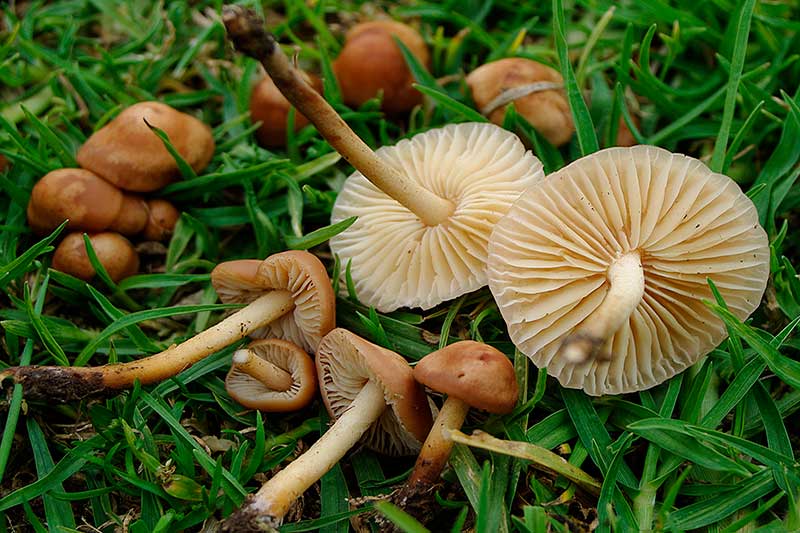
guiadesoria.es Hongos y setas de Soria
Marasme des Oréades29 july 2010. 'Marasme des Oréades' is a little elf under the rain with a particular enlighten mushroom. His name came from the mushroom named in french ' Marasme des Oréades ' wich is the 'Scotch Bonnet' or the 'fairy ring mushroom' in English ( lat. Marasmius oreades , source : Wikipedia ). Now it's the season to go in.
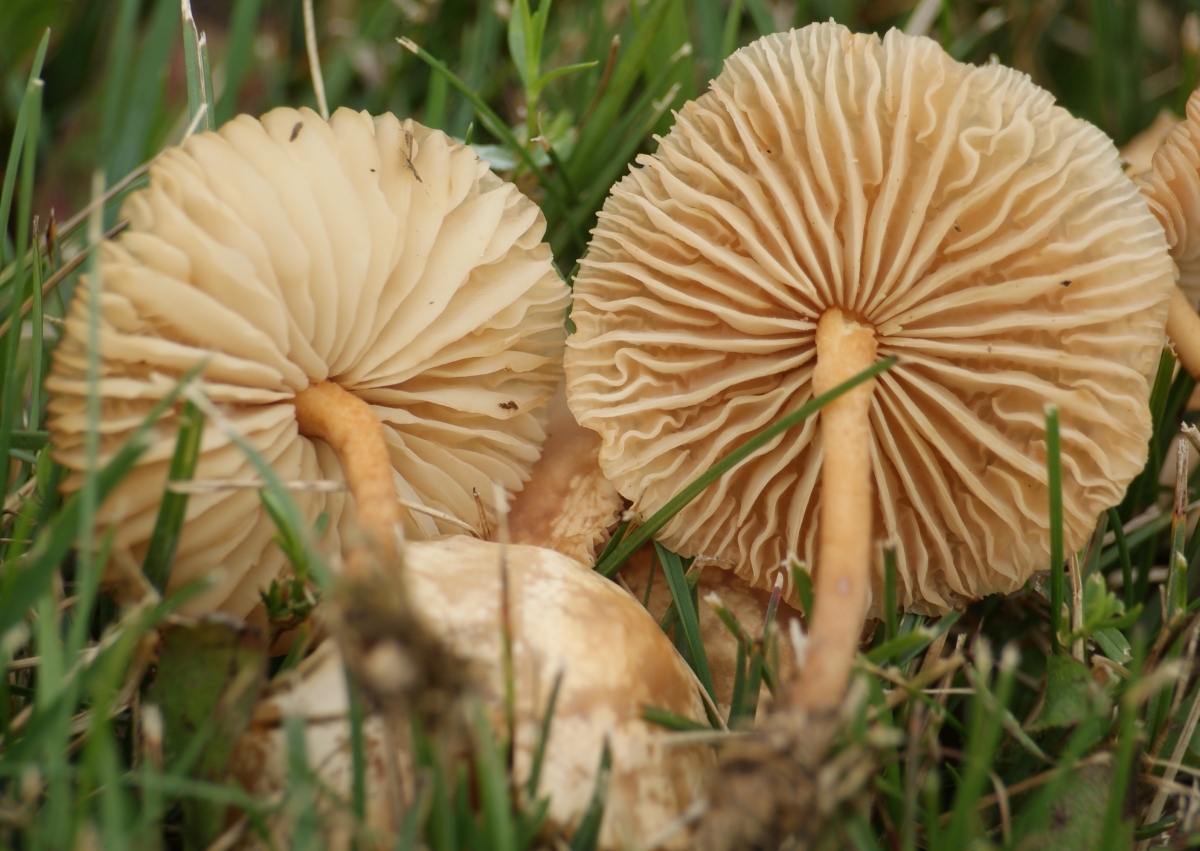
Marasme des oréades Filière mycologique de la Mauricie
Le marasme des Oréades (Marasmius oreades) Famille : Marasmiacées. Saveur : très bon. On l'appelle aussi "faux-mousseron" ou "mousseron d'automne". Attention, à ne pas confondre avec la panéole des moissons et le clitocybe blanchi, deux champignons toxiques. Le marasme des Oréades est en réalité un faux-mousseron.
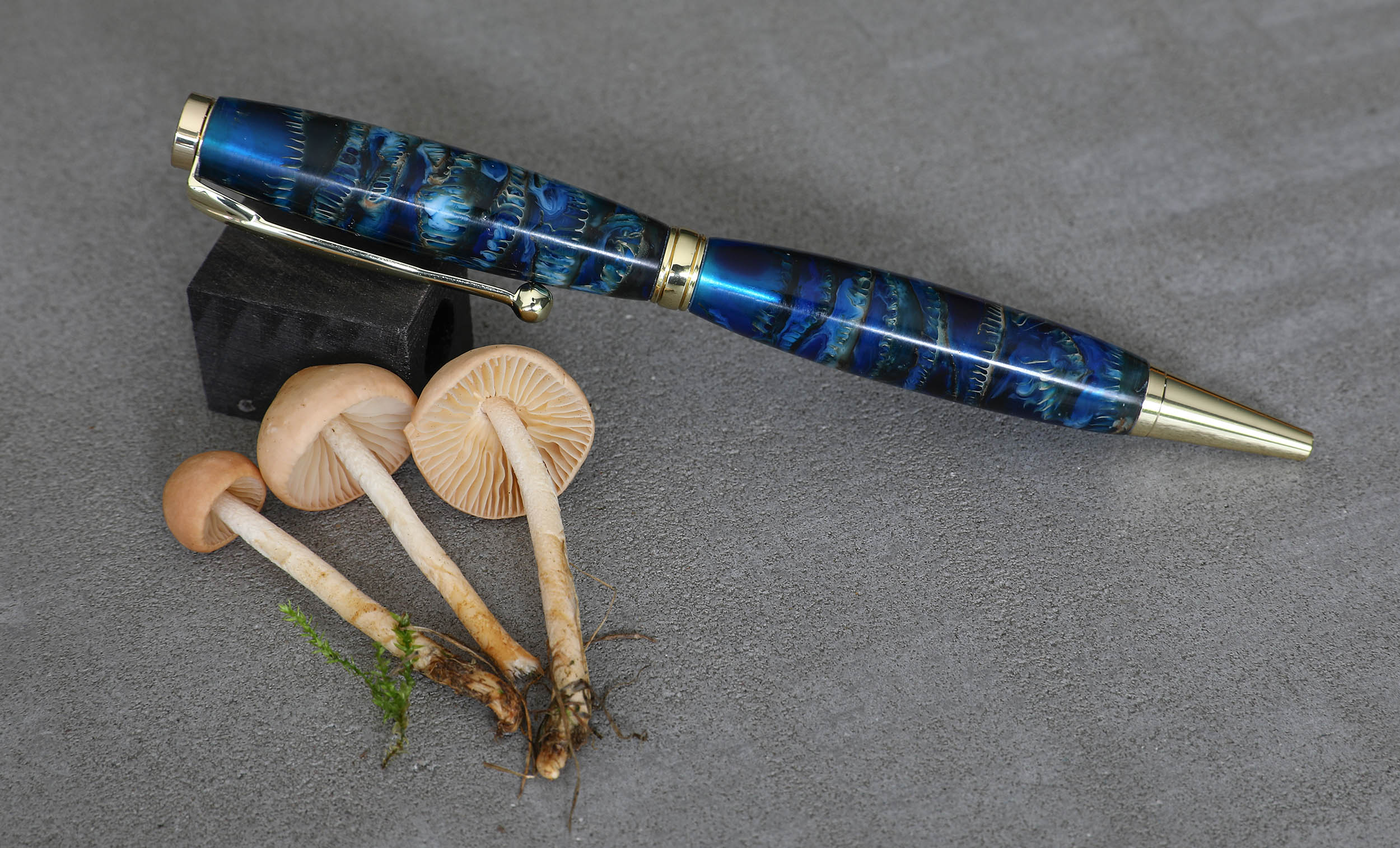
Stylo Bille Marasmes des Oréades Résine Yves Deneyer Tournage sur Bois
Description: Ecology: Saprobic on grass in lawns, meadows, and other grassy areas; frequently growing among coastal grasses in dunes; growing gregariously in troops, arcs, or rings; summer and fall--or year-round in warmer climates; widely distributed in North America. Cap: 1-5 cm across; bell-shaped with a somewhat inrolled margin at first.

Agaric campestris et marasmes des oreades 👍👍 24 mai 2021 YouTube
Marasmius oreades
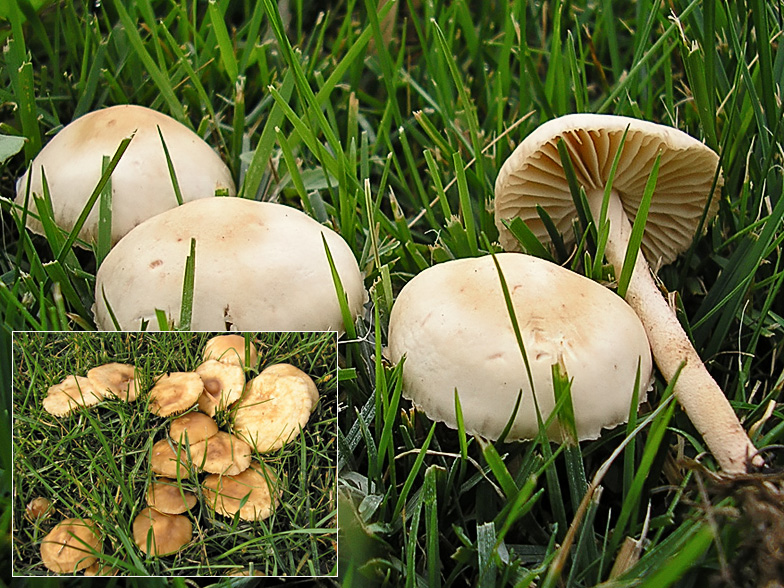
Marasmius oreades
Marasmius oreades is a mushroom that is part of the Marasmiaceae family. It is primarily found in North America and loves grassy areas. Marasmius oreades is commonly referred to as the "Fairy Ring Champignon" and that name will be used interchangeably throughout this article. The name, "fairy ring," is misleading, not because this.
.jpg)
California Fungi Marasmius oreades
Marasmius oreades is a choice edible mushroom. [5] Its sweet taste lends it to baked goods such as cookies. It is also used in foods such as soups, stews, etc. Traditionally, the stems (which tend to be fibrous and unappetizing) are cut off and the caps are threaded and dried in strings. A possible reason why this mushroom is so sweet-tasting.
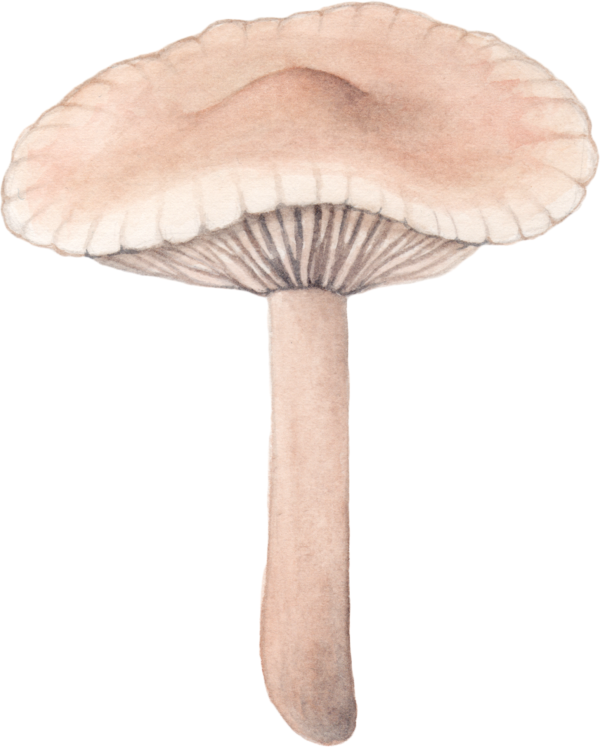
Marasme des Oréades ou faux mousseron, le Marasmius Oreades
Le vrai nom du pied dur est le Marasme des oréades. On le nomme aussi le faux mousseron ou le mousseron d'automne. Le marasme des oréades pousse d'avril à novembre en groupes, "ronds de sorcières" ou en ligne dans l'herbe des prés, les pâturages, le long des chemins, surtout en période humide.
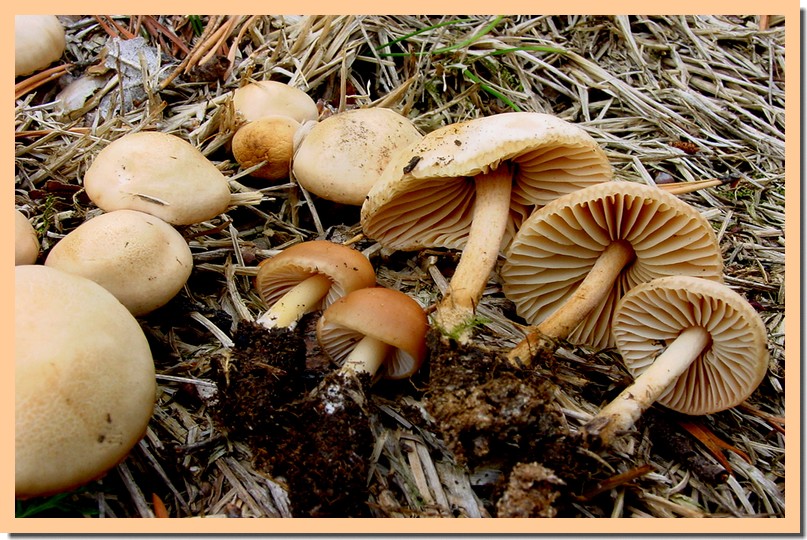
Marasmes
Add the fairy rings to the pan and cook for a few minutes to brown them, then season with salt and pepper. Add the wine and cook for 2-3 minutes, then add the chicken stock. Bring the water to a boil, add the pasta and stir thoroughly to prevent clumping. Cook the pasta to al dente, then add to the pan with the mushrooms.